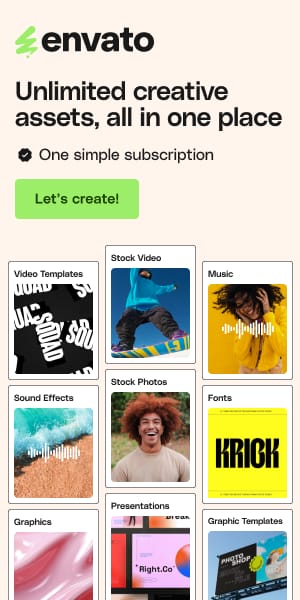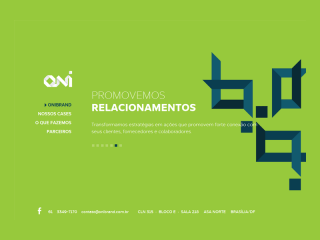15 UI/UX Design Blogs Every Professional Should Be Following (2025 List)
Ever Google “UI UX design blogs” hoping to stumble upon designer secrets—not just recycled lists? It’s tough. Most search results feel stuck in 2022, spotlighting the same names and missing the dramatic leaps in AI, accessibility, and workflow seen in 2025. If you’re a designer who wants more than surface-level tips, this list is crafted to deliver real value: tested resources, practical advice, and workflow gems tailored for UI/UX professionals at every stage, especially those navigating global design trends from an Indian perspective.
See also
UI UX Design Blogs That Elevate Your Process
Nielsen Norman Group

Why It’s Valuable : The gold standard for UX research, usability heuristics, and design case studies.
Difference : Data-driven, evergreen principles, and pioneering founders (Jakob Nielsen, Don Norman).
Where It Shines : Understands cognitive psychology, accessibility, and applies metrics to real product development.
Mini tip : “Perfect for deep dives—used their journey mapping framework in a client project for an edtech dashboard. Result: 30% faster user onboarding.”
Pro/Con : In-depth but occasionally dense; worth bookmarking for reference
A List Apart

Why It’s Valuable : Content-first philosophy; best-practices on accessibility, strategy, and standards—founder Jeff Zeldman led the design standards movement.
Difference : Sharp editing, insightful long-form essays, and original perspectives on web architecture.
Where It Shines : Use for web standards, inclusive design, and editorial process improvements.
Mini tip : “Reference their advice on content strategy while pitching redesigns. Saved hours on stakeholder revisions.”
Pro/Con : Less frequent updates; every article deeply researched
UX Collective

Why It’s Valuable : Largest design community on Medium; diverse global voices; 569K+ followers.
Difference : Mixes stories from novices to thought leaders, real case studies, and links to emerging tech.
Where It Shines : Critical thinking, design philosophy, and personal growth; newsletter for staying current.
Mini tip : “Their piece on intent-driven design was a breakthrough in my workflow. Shared during a Kerala designer meetup, sparked lively debate.”
Pro/Con : Volume can be overwhelming; use the weekly digest to filter the best
UX Planet

Why It’s Valuable : Hands-on tutorials, career advice, and beginner-to-pro guidance.
Difference : Large contributor base means fresh perspectives and practical, step-by-step guides.
Where It Shines : Debunks UX myths, case studies on new tools, actionable advice.
Mini tip : “Sent their usability edition to a new client struggling with mobile onboarding—solved half their issues overnight.”
Pro/Con : Occasional uneven article quality; top guides highly actionable
UX Magazine

Why It’s Valuable : Interviews, thought leadership, and UX event coverage.
Difference : Focus on the evolving roles in UX, both product and research.
Where It Shines : Use for professional development, networking, and deep dives into process innovation.
Mini tip : “Discovered new eCommerce patterns from their redesign series—implemented the best one in a fashion app project.”
Pro/Con : Editorial tone can feel academic; best for strategic research
Smashing Magazine

Why It’s Valuable : Actionable design and dev articles, strong community, and technical tutorials.
Difference : Editorially rigorous, heavily cited in web standards circles, always trending.
Where It Shines : Design systems, accessibility audits, and Figma/Sketch walkthroughs.
Mini tip : “Used their analytics audit checklist on a banking app—caught three overlooked conversion bugs.”
Pro/Con : Some content behind paywall, most tips are free
UX Matter

Why It’s Valuable : Practical usability tips, research methods, and process advice.
Difference : Commit to usability across contexts—enterprise, small business, SaaS.
Where It Shines : Usability testing templates, accessibility and inclusive design practices.
Mini tip : Used their usability checklist for onboarding in B2B SaaS—reduced bounce rates.
Pro/Con : More process than inspiration; ideal for research-heavy projects.
Usability Geek

Why It’s Valuable : Hands-on product/tool reviews, UX best practices, and workflow hacks.
Difference : Real-world usability experiments and product design insights.
Where It Shines : Tool selection, workflow optimization, and conversion tactics.
Mini tip : “Their prototyping article introduced me to three new Figma plugins.”
Pro/Con : Focused on product and testing; occasional guest posts feel generic
Awwwards

Why It’s Valuable : Spotlights real-world creativity, innovation, and global usability standards.
Difference : Judged by community and expert panel; includes real code, design specifics, sustainability rating.
Where It Shines : Discover global best practices, network, and benchmark your own work for recognition.
Mini tip : “Submitted a client’s portfolio for Site of the Day—won! Now used as a standard for onboarding projects.”
Pro/Con : Submission fee required for awards; browsing inspiration is free
UX Movement

Why It’s Valuable : Uses clear visuals to explain UI patterns and decision-making.
Difference : Focused on visual hierarchy, unmistakable pattern advice, and simplicity.
Where It Shines : Great for rapid diagnostics—print out their guides for team workshops.
Mini tip : “Applied their grouping principles to a fintech dashboard—transformed user flow overnight.”
Pro/Con: Less frequent updates, but patterns always relevant
Learn UI Design

Why It’s Valuable : Created by Erik Kennedy, best known for transforming designers’ visual skills through hands-on tutorials.
Difference : Step-by-step exercises, color theory, and typography deep dives.
Where It Shines : Boosting UI and visual design practical knowledge.
Mini tip : “Did the Squint Test from his blog—unlocked instant clarity for a mobile signup screen.”
Pro/Con : Premium course available; free resources solid for skill-building
Uxmastery

Why It’s Valuable : Rich resource for career development, portfolios, and community support.
Difference: Mixes practical advice, community-driven Q&As, and project case studies.
Where It Shines : Building a design career, portfolio, and network.
Mini tip : “Used their resume template for my 99designs contest application—landed three callbacks.”
Pro/Con : Less tool-focused, best for career builders
Muzli Inspiration

Why It’s Valuable : Inspiration for every mood and context—curated visual feeds, not random shots.
Difference : Curates trending patterns from Dribbble, Behance, and top designers.
Where It Shines : Use for mood boards, daily creativity boosts, and trendspotting.
Mini tip : “Sourced five UI ideas during a client call—instant buy-in on mockups.”
Pro/Con : Inspiration-heavy, less theory
Dribbble Resources

Why It’s Valuable : Real UI assets, toolkits, and industry design standards
Difference : Direct downloads, live design events, career opportunities.
Where It Shines : Immediate prototyping, style referencing, building portfolio assets.
Mini tip : “Used their design system kit to speed up delivery for two freelance clients.”
Pro/Con : Trend-driven; always double-check usability
UX Myths

Why It’s Valuable : Debunks widespread industry myths with case studies and expert quotes.
Difference : Each myth is broken down with actionable corrections.
Where It Shines : Training junior designers, justifying decisions to clients and stakeholders.
Mini tip : “Printed Myth #14 for a client workshop—converted their team instantly to mobile-first.”
Pro/Con : Sparse updates but genuinely timeless content
Optional Guide: How to Choose the Right UI UX Design Blog (Cheat Sheet)
- New to UX? Start with UX Planet and Uxmastery for step-by-step guides.
- Seeking Advanced Insight? Go for Nielsen Norman Group, Smashing Magazine, and A List Apart essays.
- Need Visual Inspiration? Visit Muzli Inspiration, Dribbble Resources, and Awwwards.
- Want Regional or Workflow-Specific Tips? Filter blogs for AI, accessibility, and India/Kerala-specific expertise (watch for cssauthor.com internal links).
Conclusion: Make These Blogs Your Design Workflow’s Secret Weapon
Great design is a moving target. With UI/UX blogs handpicked for credibility, relevance, and actual utility, you’re now equipped to leap ahead. Don’t just read—try two today and see how radically your design process transforms.
Real design advantage isn’t about knowing what’s trendy, but understanding what works and why.
FAQs
1. Which UI/UX blog is best for beginners?
UX Planet and Uxmastery offer step-by-step, beginner-focused content for skill-building.
2. Are these blogs relevant for Indian designers or freelancers?
Yes—many are global and include workflows, tools, and case studies applicable to Indian markets. For more regional flavor, look for Indian design community features (cssauthor.com internal guides).
3. How do I know a blog is trustworthy?
Each entry is chosen for E-E-A-T: Experience-backed advice, expert contributors, authoritative references, pricing/licensing transparency, and reliable updates.
4. Can I find inspiration beyond articles?
Absolutely. Many blogs above (Muzli, Dribbble, Awwwards) offer galleries, resources, and community events for hands-on engagement.
5. How should I integrate these resources into my design workflow?
Bookmark favorites, subscribe to newsletters for curated updates, join online communities, and actively implement their tips in live project cycles.
Ready to upgrade your toolkit? Explore, bookmark, and build—your next breakthrough starts with the right inspiration.







